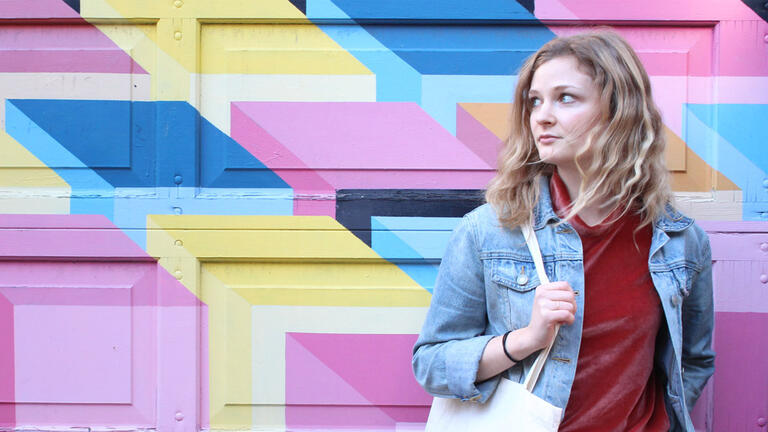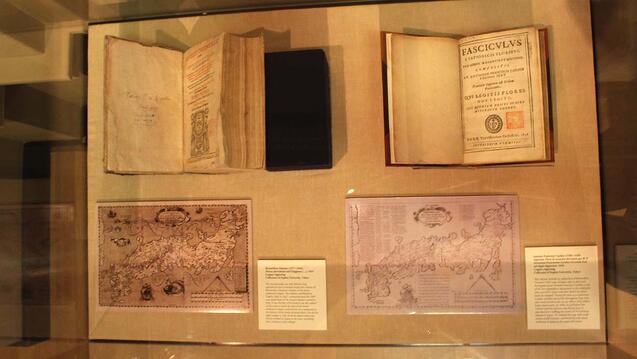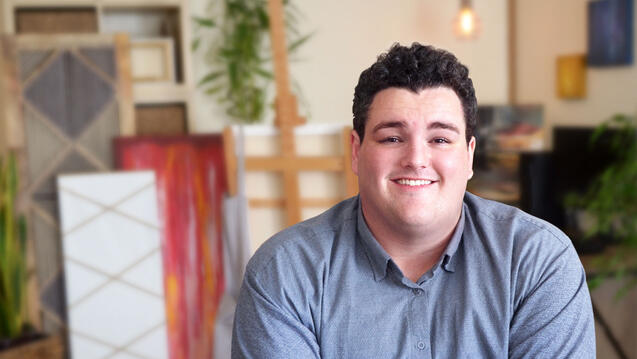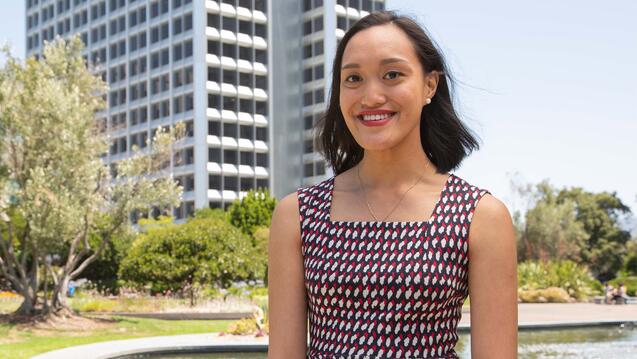
The Art of Tech
Madeline Warner ‘15 was an avid artist from early childhood, obsessed with painting and drawing. She pursued her passion all the way through high school, and it was not until college that she discovered art history and found her interests evolving towards the more academic side of the arts. She was excited by the prospect of earning a degree in Art History/Arts Management, (now Art History & Museum Studies) where she could merge a love of the arts with her scholarly interests in research-based analysis – all within the cultural hub of San Francisco.
Madeline has since combined her love of the arts with the Bay Area’s other cultural mainstay: tech. She now works at Modsy, an online interior design company that uses 3D technology to show how real furniture will look and fit in a client’s exact space, employing her art history background in marketing the aesthetic practice of interior design.
What was it like to study art history in San Francisco?
It is incredible to be surrounded by such a thriving arts culture in which you can actually interact with and experience the works and ideas you study all day in class. I wouldn’t have had the chance to intern at the de Young Museum and the San Francisco branch of Christie’s auction house had I not been living in San Francisco.
It’s also an amazing place to study because we not only looked at pictures in books and on screens, but could actually go see many of the works in real life. For example, I took a class on the works of Frida Kahlo and Diego Rivera one semester, and the class often left campus to go see several of Rivera’s murals. When you’re studying the way people look at and interpret images, actually seeing those images yourself – not just in a textbook – is crucial to fully understanding them.
Tell me more about interning at the de Young Museum.
I worked with the Museum Ambassador program at the de Young Museum and it was my favorite internship experience. Over the course of a year, I mentored a team of local public high school students, developing their skills as presenters and training them to teach younger elementary school students about art. It was a huge learning opportunity for me, as I got to work not just with the objects in museums but with young people who were experiencing those objects and learning about them for the first time. I learned so much about working in museums and how important it is for museums to connect with their communities through programs like this.
How did your internship at Christie’s compare?
Christie’s auction house was a totally different side to the art world than working in museums. I assisted with curatorial research, event planning, and lots of administrative work. It was amazing to gain exposure to the industry so early in my career.
Were you involved in any research projects at USF?
I had the incredible opportunity my junior and senior years to work with Professor Catherine Lusheck as her research assistant. The main project that I assisted her with was publishing her PhD dissertation as a book; Rubens and the Eloquence of Drawing. I did a lot of research, reading and annotation, and learned more than I ever could have imagined about Rubens.
What do you do at Modsy?
I work on the marketing team crafting the written content across our website and social media. A lot of what I do involves working directly with our customers to tell their stories and show how designing their homes improved their lives. I never thought I’d end up in marketing, but so far it’s been a lot of fun and I get to use my degree in a different way than I would have ever imagined. Things move at light speed in the tech world, so the ability to think critically, make research-based decisions, and communicate effectively are invaluable strengths.
What capacity do you think art history has to carry out USF’s mission?
Studying art history forces you to expand your view of the world and see it from different perspectives than your own. When you look at works of art from another time or culture, you’re experiencing the world through a different set of values and you can’t help but open your mind to try and understand those differences. I would venture to say that understanding and respecting other points of view is fundamental to effecting any real and positive social change.


